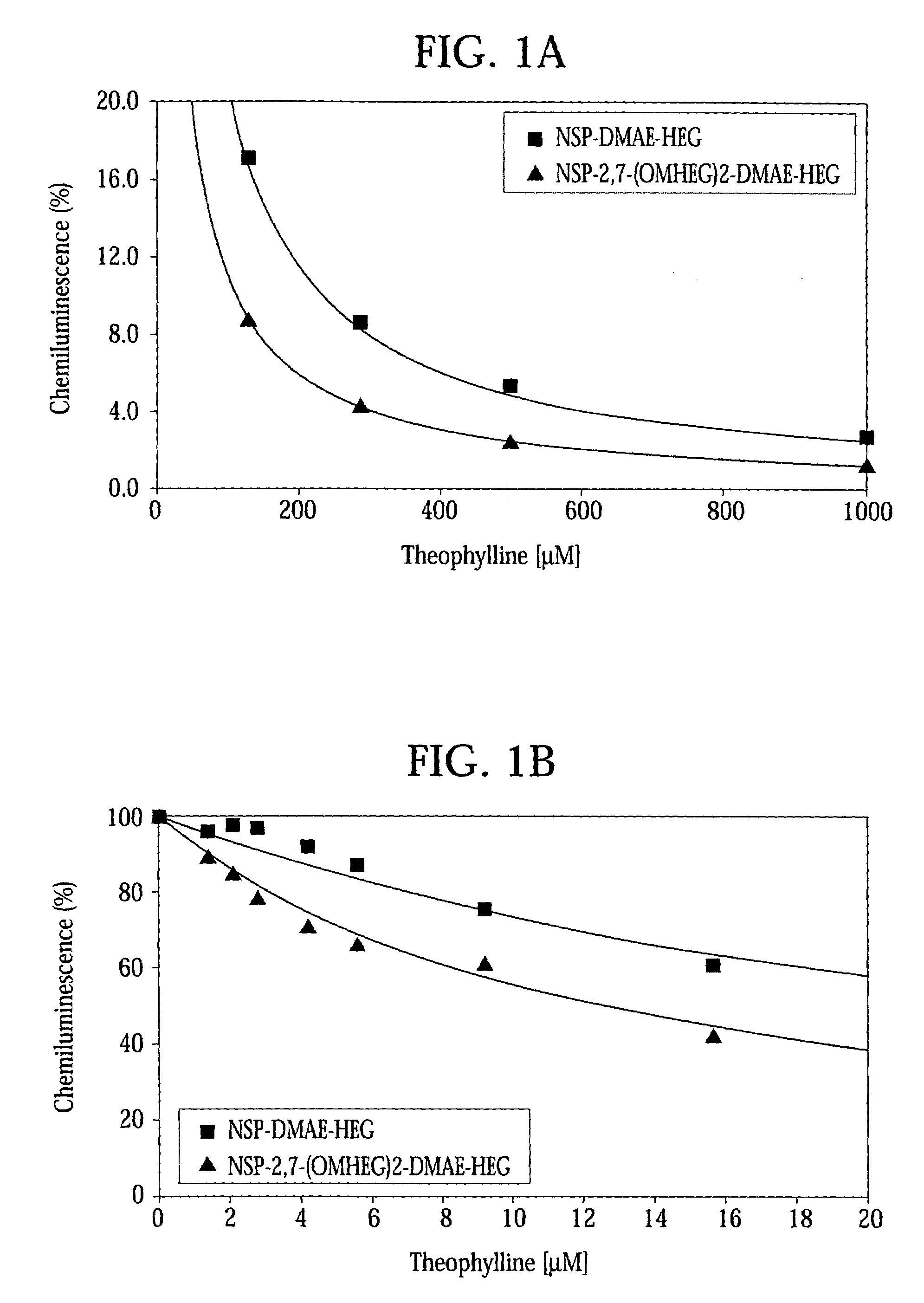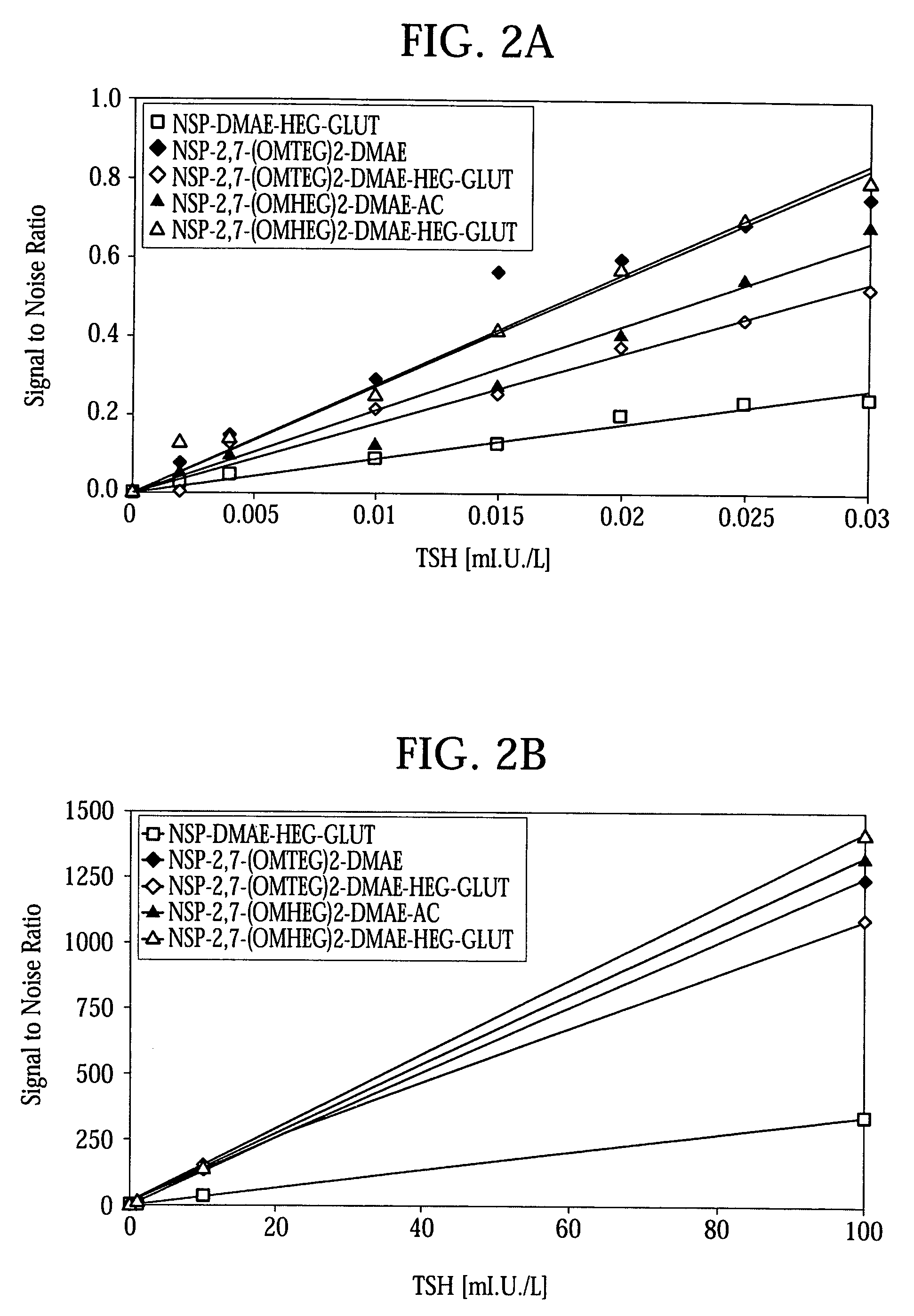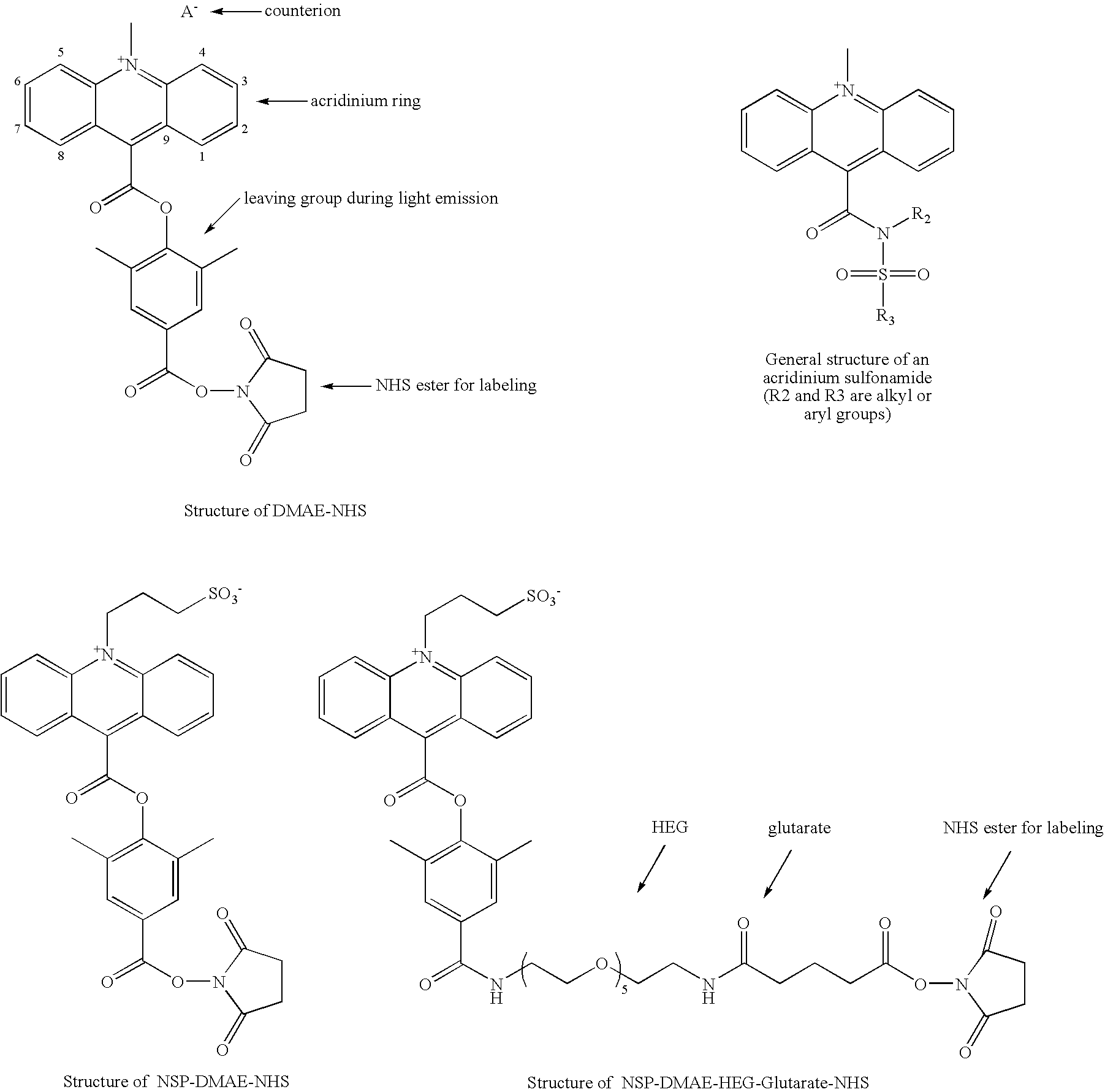High quantum yield acridinium compounds and their uses in improving assay sensitivity
a chemiluminescent acridinium and high quantum yield technology, applied in the field of high quantum yield chemiluminescent acridinium compounds, can solve the problems of limiting its commercial utility and none of the effects of being addressed
- Summary
- Abstract
- Description
- Claims
- Application Information
AI Technical Summary
Benefits of technology
Problems solved by technology
Method used
Image
Examples
example 1
Synthesis of 2′,6′-dimethyl-4′-carboxyphenyl 2,7-dimethoxy-10-N-sulfopronyl-acridinium-9-carboxylate [NSP-2,7-(OMe)2-DMAE] and its N-succinimidyl ester [NSP-2,7-(OMe)2-DMAE-NHS]
[0182](a) Synthesis of 2′,6′-dimethyl-4′-benzyloxycarbonylphenyl 2,7-dimethoxy-acridine-9-carboxylate
[0183]2,7-Dimethoxy acridine-9-carboxylic acid (U.S. Pat. No. 5,521,103) (0.5 g, 0.00177 mol) in pyridine (˜25 mL) was treated with tosyl chloride (0.674 g, 2 equivalents). After 10 minutes of stirring, 4-benzyloxycarbonyl-2,6-dimethylphenol (0.453 g, 1 equivalent) was added and the resulting mixture was stirred at room temperature under a nitrogen atmosphere. After 1-2 hours, an additional 2 equivalents of toluenesulfonyl chloride was added along with 0.5 equivalent of the phenol and 10-15 mL pyridine. The reaction was stirred at room temperature under nitrogen atmosphere for 48 hours. The solvent was then removed under reduced pressure and the residue was dissolved in 50 mL chloroform. This solution was wash...
example 2
Synthesis of 2′,6′-dimethyl-4′-carboxyphenyl 2-methoxy-10-N sulfopropyl-acridinium-9-carboxylate (NSP-2-OMe-DMAE)
[0190](a) Synthesis of N-(4-methoxylhenyl)isatin
[0191]A solution of isatin (2.5 g, 0.017 mol) in anhydrous DMF (50 mL) was cooled to 0° C. in an ice-bath and treated with sodium hydride (0.5 g, 1.2 equivalents). A purple solution was formed which was stirred at 0° C. for 30 minutes and then warmed to room temperature. To this solution was added 4-bromoanisole (2.13 mL, 1 equivalent) followed by copper iodide (6.46 g, 2 equivalents). The reaction was heated in an oil-bath at 145° C. for 6-7 hours. The reaction was then cooled to room temperature, diluted with an equal volume of ethyl acetate and filtered. The filtrate was evaporated to dryness. The crude product, which was obtained as a dark brown solid was used as such for the next reaction.
[0192](b) Synthesis of 2-methoxy-acridine-9-carboxylic acid
[0193]The isatin from step (a) was refluxed with 150 mL of 10% potassium h...
example 3
Synthesis of 2′,6′-dimethyl-4′-carboxyphenyl 3-methoxy-10-N-sulfopropyl-acridinium-9-carboxylate [NSP-3-OMe-DMAE]
[0202]This compound was made from 3-bromoanisole, isatin and 4-benzyloxycarbonyl-2,6-dimethylphenol using the same procedures described above for the 2-methoxy analog in Example 2.
[0203]The following reactions describe the synthesis of NSP-3-OMe-DMAE.
[0204]
PUM
| Property | Measurement | Unit |
|---|---|---|
| temperature | aaaaa | aaaaa |
| flow rate | aaaaa | aaaaa |
| volume | aaaaa | aaaaa |
Abstract
Description
Claims
Application Information
 Login to View More
Login to View More - R&D
- Intellectual Property
- Life Sciences
- Materials
- Tech Scout
- Unparalleled Data Quality
- Higher Quality Content
- 60% Fewer Hallucinations
Browse by: Latest US Patents, China's latest patents, Technical Efficacy Thesaurus, Application Domain, Technology Topic, Popular Technical Reports.
© 2025 PatSnap. All rights reserved.Legal|Privacy policy|Modern Slavery Act Transparency Statement|Sitemap|About US| Contact US: help@patsnap.com



